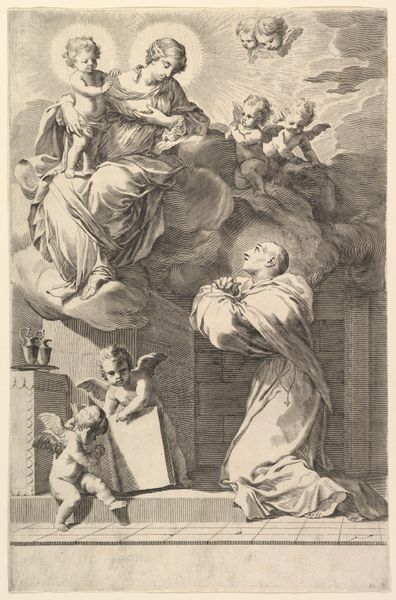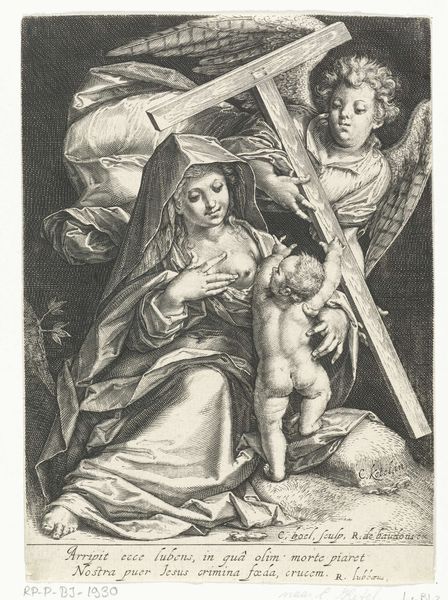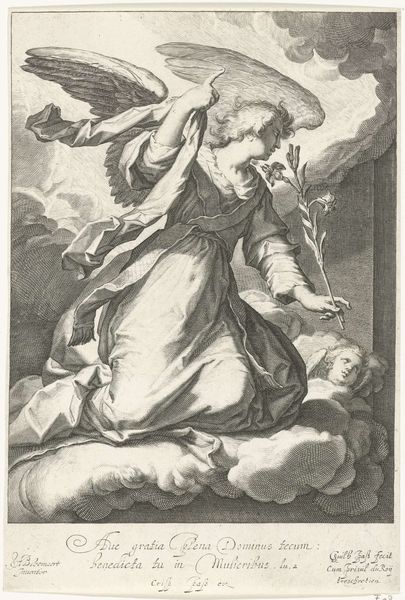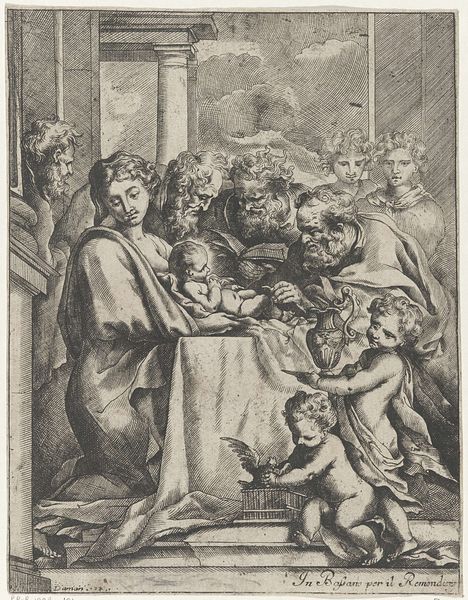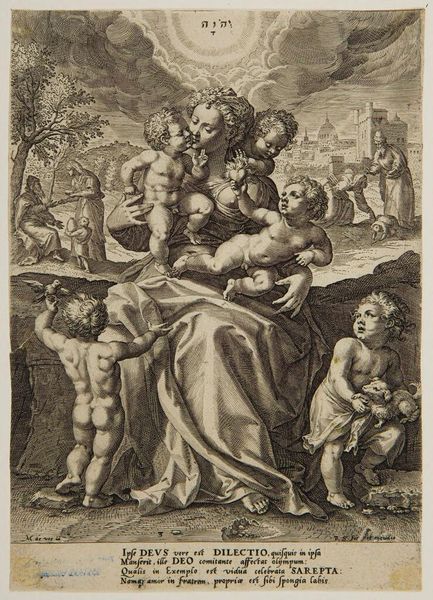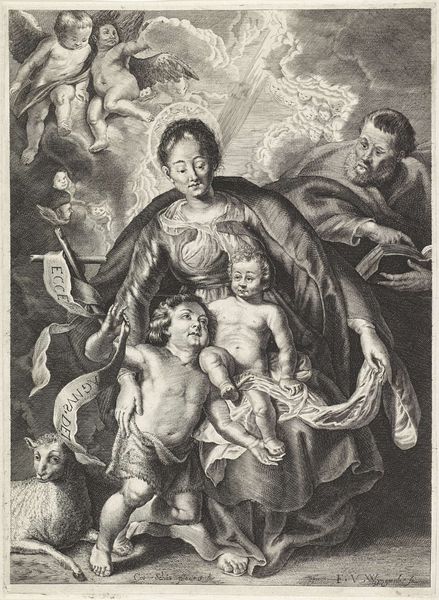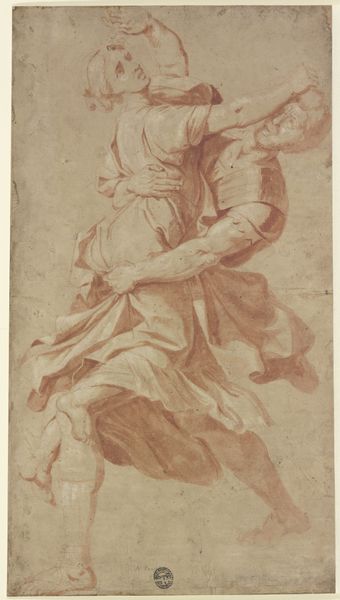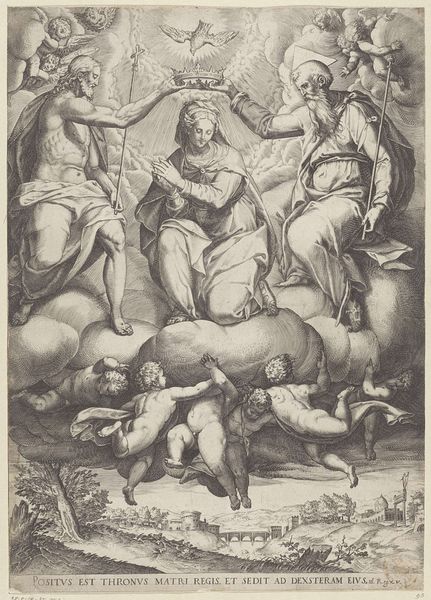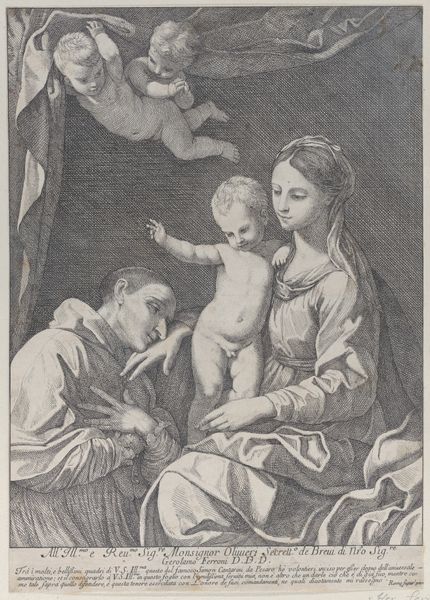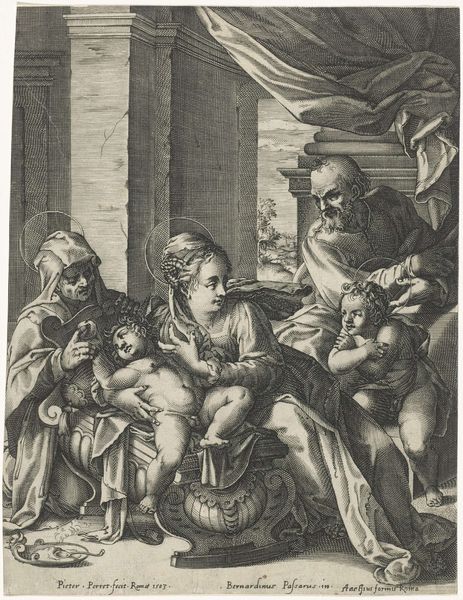
#
possibly oil pastel
#
oil painting
#
neo expressionist
#
acrylic on canvas
#
portrait head and shoulder
#
underpainting
#
painting painterly
#
portrait art
#
fine art portrait
#
digital portrait
Copyright: Public Domain: Artvee
Curator: This is Nicolas Poussin's "St. Cecilia," painted around 1635. Editor: It has an interesting color palette. The golden tones are arresting. There's an almost unsettling contrast between the serenity of St. Cecilia herself and the frantic energy of the children that surround her. Curator: The dynamism stems in part from the strong diagonal of the draped fabric in the background and the angel hovering in the upper quadrant of the work. See how Poussin directs the eye from the top left corner, through the bright robe, down to the angel bearing the musical score, then to the hands on the keyboard? Editor: Exactly. St. Cecilia, the patron saint of music, is typically portrayed with an instrument, often an organ. The figures, those surrounding cherubs for example, aren't mere decorations; they are products of the deeply gendered views of his time, where knowledge and accomplishment was viewed as secondary for women. She's a figure of learning, but one constantly monitored and evaluated. Curator: One might also interpret the musicality structurally, looking at the organization of forms in planes parallel to the surface of the painting. Each contributes to the whole—the tonal qualities, the textures. Editor: To me, her figure represents a kind of controlled artistry, a beauty curated within the constraints of both social and aesthetic expectations. I wonder, what liberties were denied to her because of these? What music did she never get to play, and why? Curator: It is important not to divorce the artwork from its own historical moment, but to assess how its aesthetics have changed our experience across centuries. Poussin utilizes a limited color palette that gives this canvas such coherence and calm. Editor: Perhaps our contemporary assessment, however, might better attend to these earlier dynamics that formed, constrained, and still impact these social relationships today. What price did St. Cecilia pay? Curator: Well, either way, considering these compositional or even political implications of these dynamics makes experiencing the work richer. Editor: Yes, a reminder to reflect not just on the beauty, but also the silences it holds.
Comments
No comments
Be the first to comment and join the conversation on the ultimate creative platform.

